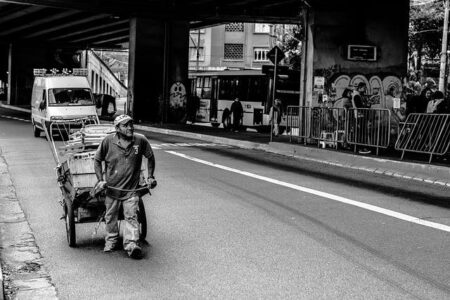Building an Inclusive and Efficient Public Transit System for All New Yorkers
As New York City’s population grows and diversifies, the urgency to develop a public transportation network that is accessible and efficient for everyone intensifies. Millions depend on subways, buses, and commuter rails daily, yet many face significant obstacles—especially seniors, individuals with disabilities, and those with limited mobility. This article examines the current accessibility landscape of NYC’s transit system, reviews ongoing initiatives and remaining challenges, and advocates for strategic investments and policy reforms to ensure equitable transit access for all residents.
Modernizing Transit Infrastructure to Accommodate Varied Mobility Requirements
To effectively serve New York’s multifaceted population, the city’s transit infrastructure must undergo comprehensive modernization. This transformation involves more than routine maintenance; it requires embedding inclusive design principles that address the needs of all commuters—whether they use mobility aids, travel with young children, or have other accessibility considerations. Key improvements include expanding elevator and ramp availability at major subway hubs, enhancing tactile navigation aids for the visually impaired, and deploying real-time accessibility notifications via mobile platforms to ease daily travel.
Essential approaches to diversify and improve transit accessibility include:
- Upgrading legacy stations with state-of-the-art accessibility features
- Increasing service frequency during off-peak hours to support flexible travel patterns
- Establishing micro-mobility centers to bridge first- and last-mile transit gaps
- Collaborating with local organizations to develop tailored solutions for underserved communities
| Initiative | Current Phase | Projected Completion |
|---|---|---|
| Elevator Installation at Penn Station | Ongoing | Q1 2025 |
| Expansion of Tactile Guidance Systems | Design Stage | Late 2025 |
| Micro-Mobility Hub Launch in Brooklyn | Pilot Testing | Mid 2024 |
Overcoming Obstacles for Riders with Disabilities
Despite progress, many New Yorkers with disabilities continue to encounter significant barriers within the transit system. Frequent elevator outages, confusing station layouts, and limited availability of accessible vehicles restrict their independence and mobility. Addressing these issues is not just about convenience—it is about ensuring equal access to essential city services. Prioritizing regular elevator maintenance, installing comprehensive tactile maps, and providing real-time updates on accessibility features are critical measures that transit authorities must adopt.
Effective solutions require a collaborative approach involving municipal agencies, disability rights advocates, and technology innovators. Noteworthy advancements include:
- Customizable transit apps offering route options tailored to individual mobility needs
- Enhanced training programs for transit personnel focused on disability sensitivity and assistance
- Deployment of low-floor buses and fully accessible subway cars to facilitate boarding
- Improved multi-sensory signage and announcements catering to diverse sensory requirements
| Challenge | Recommended Solution | Expected Outcome |
|---|---|---|
| Elevator malfunctions and downtime | Dedicated rapid-response repair teams and live status updates | Minimized delays and increased reliability |
| Complex station navigation | Installation of clear tactile maps and improved signage | Enhanced wayfinding and reduced commuter stress |
| Scarcity of accessible vehicles | Introduction of additional low-floor buses and accessible subway cars | Smoother boarding for wheelchair users and others |
Harnessing Technology to Boost Accessibility and Rider Experience
Technological innovation is revolutionizing how New Yorkers interact with public transit, particularly for those with accessibility needs. Real-time tracking applications provide up-to-date information on elevator functionality, vehicle arrivals, and service interruptions, empowering riders to plan trips with greater certainty. Additionally, synchronized audio-visual alert systems on buses and platforms assist deaf and hard-of-hearing passengers by delivering clear, accessible information.
Beyond information delivery, modern fare payment methods such as contactless cards and mobile ticketing apps simplify transactions, benefiting neurodiverse riders and others who prefer streamlined, low-stress interactions. The table below outlines key technological tools and their accessibility advantages:
| Technology | Accessibility Advantage | Primary Beneficiaries |
|---|---|---|
| Live Elevator Status Updates | Reduces uncertainty and wait times | Wheelchair users and mobility-impaired riders |
| Integrated Audio-Visual Alerts | Provides synchronized, clear route information | Deaf and hard-of-hearing commuters |
| Contactless Fare Systems | Speeds boarding and minimizes physical contact | Riders with cognitive or sensory sensitivities |
| Mobile Ticketing Platforms | Offers flexible, remote fare management | All transit users |
Policy Initiatives to Promote an Equitable Transit Ecosystem
For New York City’s transit system to be genuinely inclusive, policymakers must enact reforms that embed accessibility into every facet of transit planning and operations. This includes conducting thorough audits to uncover hidden barriers affecting seniors, people with disabilities, and non-English speakers, and mandating universal design standards for all new projects. Funding priorities should shift toward enhancing last-mile connectivity and renovating stations to be fully accessible, rather than focusing solely on route expansion.
Key policy actions that can accelerate progress include:
- Comprehensive disability awareness and customer service training for transit employees
- Increased investment in real-time accessibility information technologies
- Strengthening enforcement mechanisms to ensure compliance with accessibility laws
- Engaging diverse communities to incorporate their feedback into transit policymaking
| Policy Reform | Effect on Riders | System-Wide Benefits |
|---|---|---|
| Accessibility Audits | Reveals and addresses hidden obstacles | Enhances maintenance and upgrade planning |
| Staff Training Enhancements | Improves rider-staff communication and support | Reduces service disruptions and complaints |
| Real-Time Accessibility Info Systems | Boosts rider confidence and trip planning | Optimizes operational efficiency |
| Community Participation | Amplifies voices of marginalized groups | Builds trust and accountability |
Conclusion: Paving the Way for an Accessible Transit Future
Guaranteeing that New York City’s public transportation is accessible to all residents transcends convenience—it is a fundamental issue of equity and urban inclusion. As the city continues to transform, so must its dedication to crafting a transit system that accommodates every individual, regardless of physical ability. Realizing this vision demands ongoing investment, innovative policymaking, and active engagement with the communities most impacted. Through these combined efforts, New York can lead the nation in establishing a truly inclusive and efficient public transit network.













